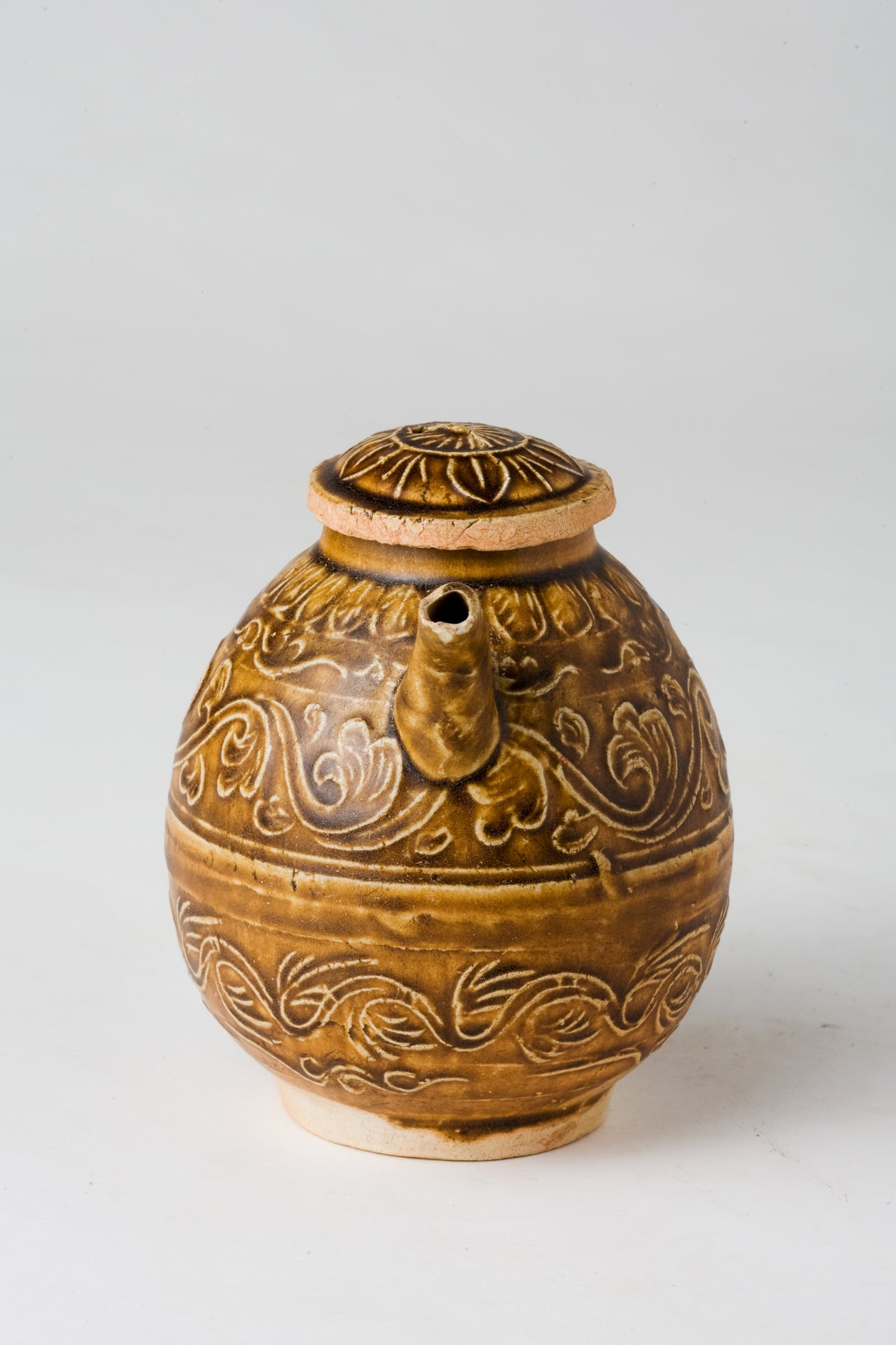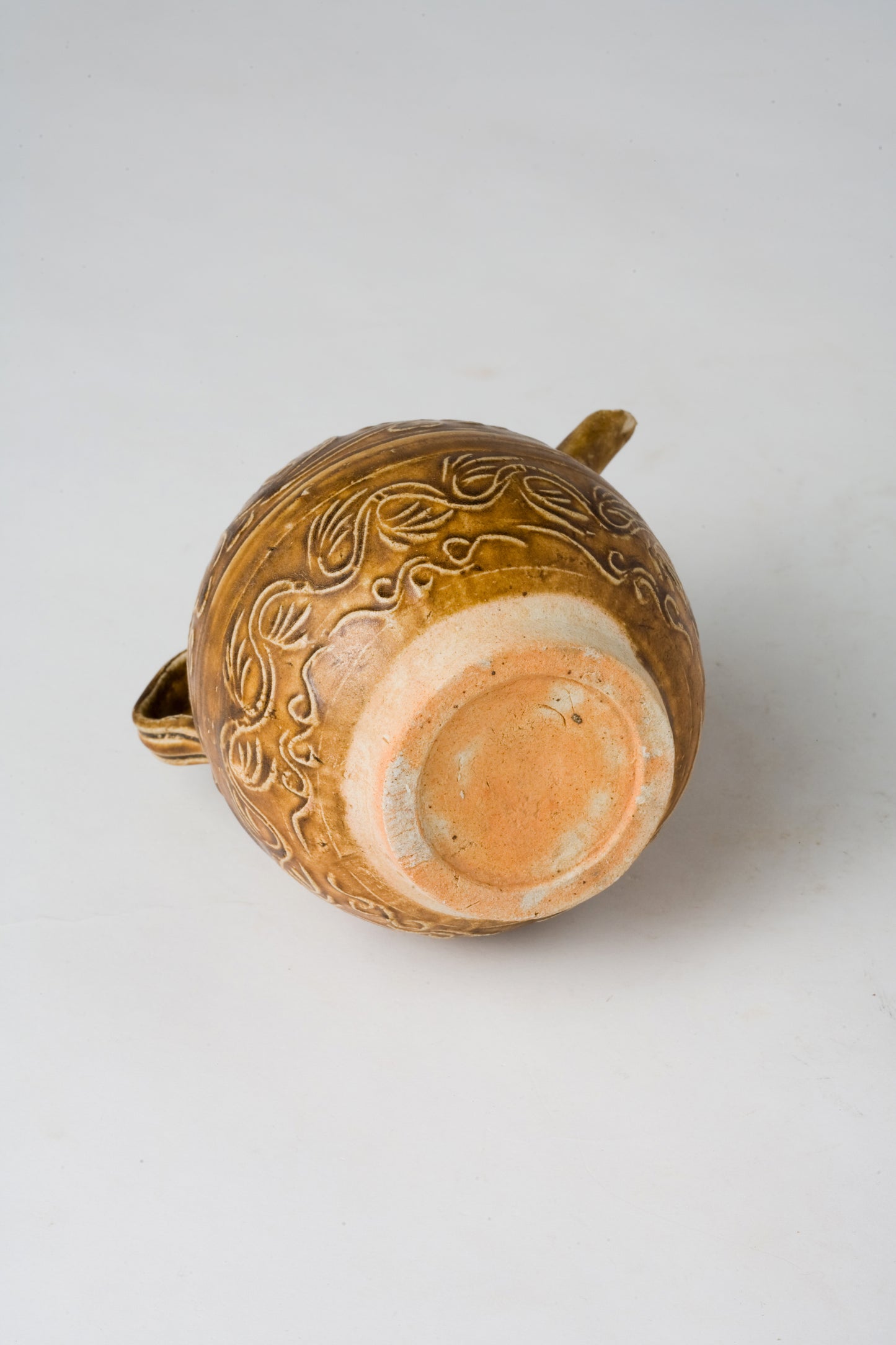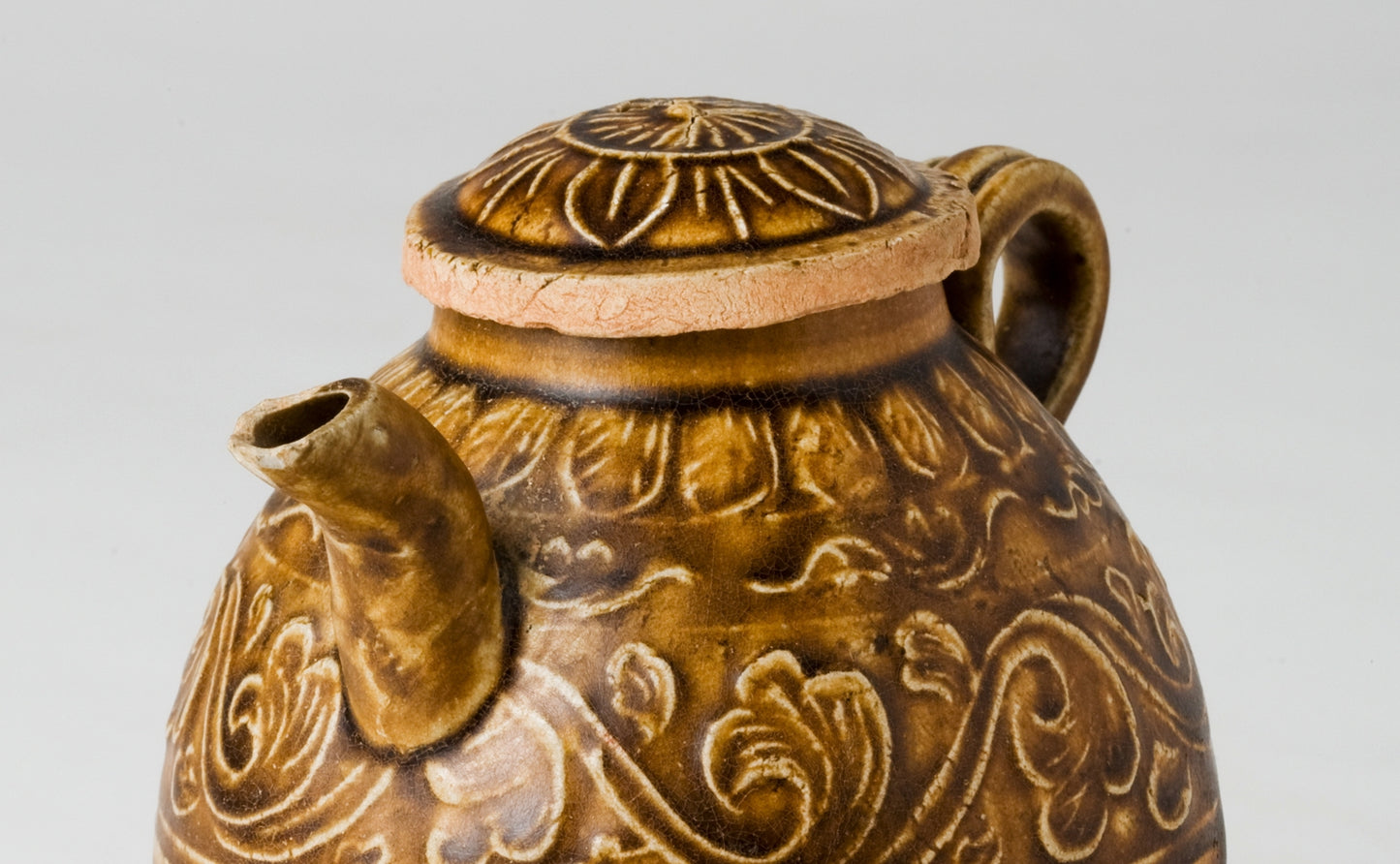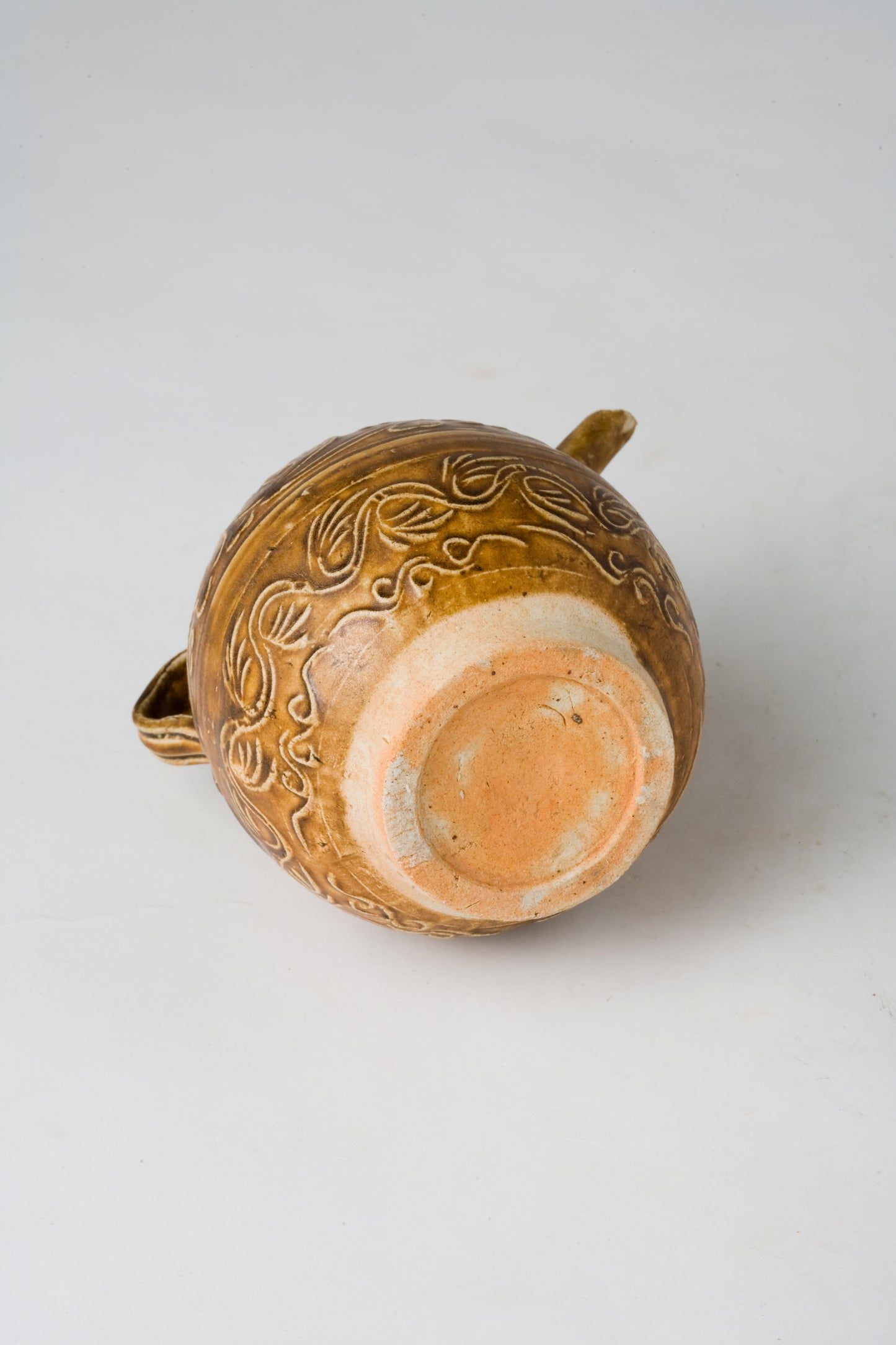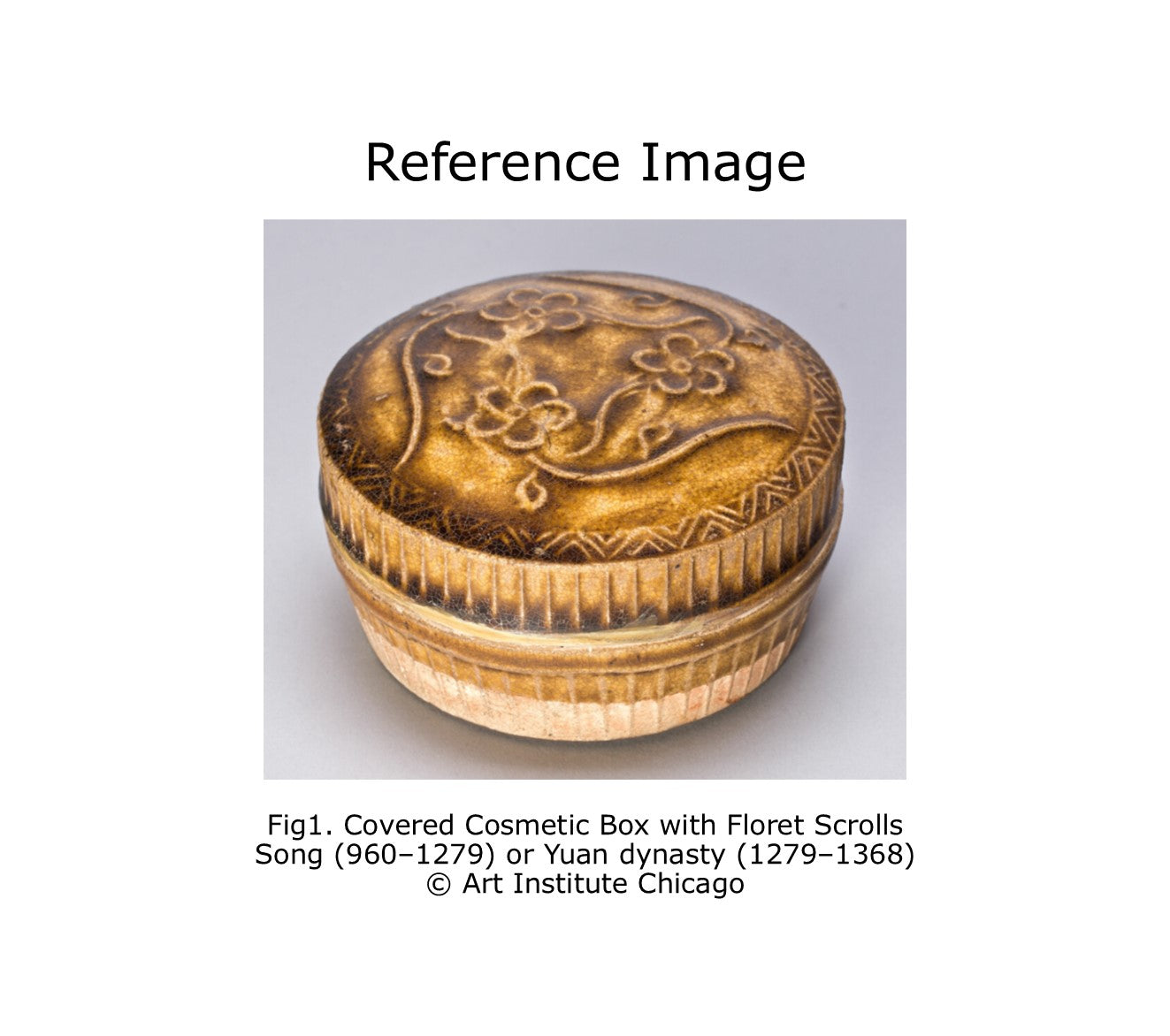Olive-Brown-Glazed Molded Ewer And Cover, Yuan Dynasty
Olive-Brown-Glazed Molded Ewer And Cover, Yuan Dynasty
Couldn't load pickup availability
The oviform body molded with floral and leaf pattern reminiscent of waves, all covered with an olive-brown glaze. The glaze drips and irregular streaks of brown-glazed pottery from that period are distinctive aesthetic elements of Song-Yuan Dynasty brown glazed ceramics, with glaze colors ranging from deep chocolate to light amber or honey tones.
Date : Song-Yuan Dynasty(960-1368)
Type : Olive-Brown-glazed pottery
Dimension : 12cm (Height), 4cm(Mouth Diameter)
Condition : Good
Provenance : Acquired in late 1990s from Hongkong
Reference :
1) Bonhams London 13 May 2024 - The John E. Bodie OBE (1930-2023) Collection of Chinese Art - Lot 12
(Price realised : 2,432 GBP / Type : Related)
https://www.bonhams.com/auction/29381/lot/12/a-brown-glazed-chrysanthemum-waterdropper-southern-songyuan-dynasty/
2) Christies Mar 2015 - The Collection of Robert Hatfield Ellsworth Volume VII: Chinese Works of Art Online - Lot 8045
(Price realised : 2,375 USD / Type : Closely related)
https://onlineonly.christies.com/s/collection-robert-hatfield-ellsworth-volume-vii-chinese-works-art/olive-brown-glazed-molded-ewer-cover-8045/14337
* Song-Yuan Dynasty brown glazed pottery
Song-Yuan Dynasty brown glazed pottery is notable for its unique glaze and production techniques, making it an important part of Chinese ceramic history. The most distinctive feature of these ceramics is the iron-rich glaze used, which, when fired at high temperatures, oxidizes to produce a variety of brown tones. The color of the glaze ranges from deep chocolate to lighter amber or honey hues. Subtle variations in temperature within the kiln resulted in natural color shifts, giving the surface a rich and dynamic appearance.
The texture and thickness of the glaze also contribute to its distinctiveness. The brown glaze was often applied thickly, and as it melted in the kiln, it would flow and create natural drips and streaks, producing irregular patterns on the surface. These natural variations in the glaze, whether from its flowing or uneven application, gave each piece a unique aesthetic character. The resulting run marks and mottled patterns became defining features, adding depth and visual interest to the otherwise simple forms.
Lastly, brown glazed pottery from this period is often characterized by simple, utilitarian shapes. These were primarily everyday items like bowls, jars, and vases, designed for functionality. However, despite the simplicity of the forms, the richness of the brown glaze added a sense of elegance and sophistication, making these ceramics visually appealing and highly valued for both their practicality and artistry.


